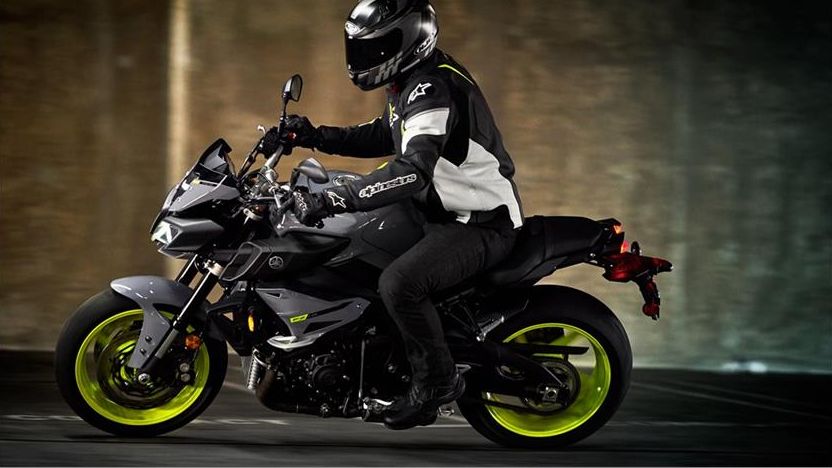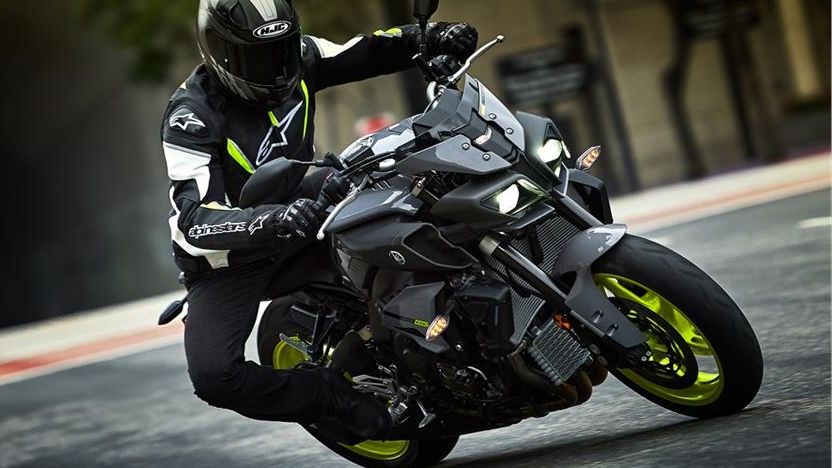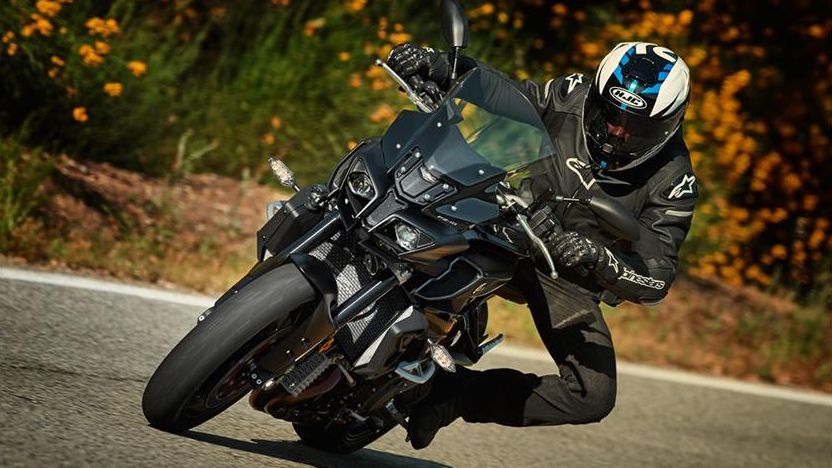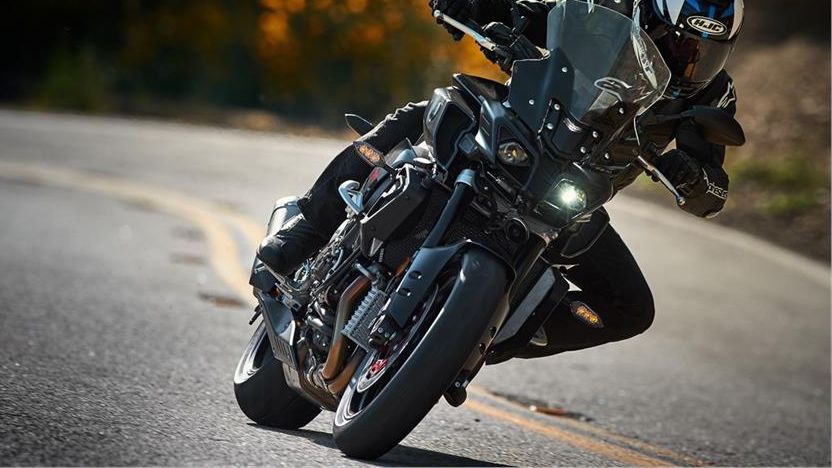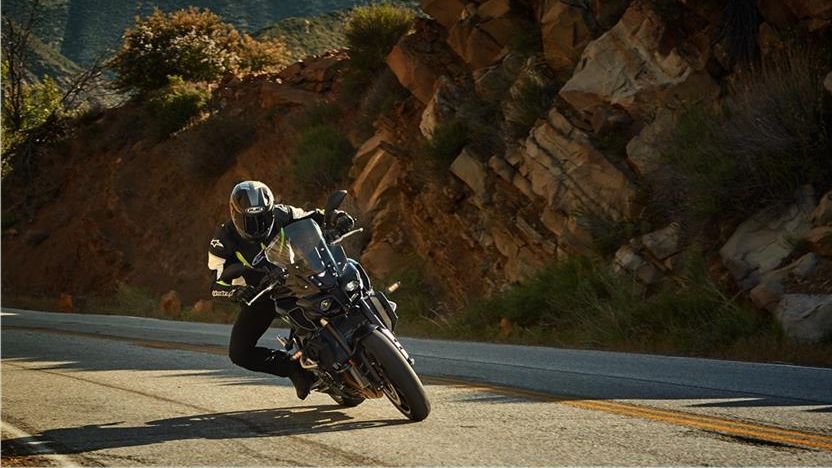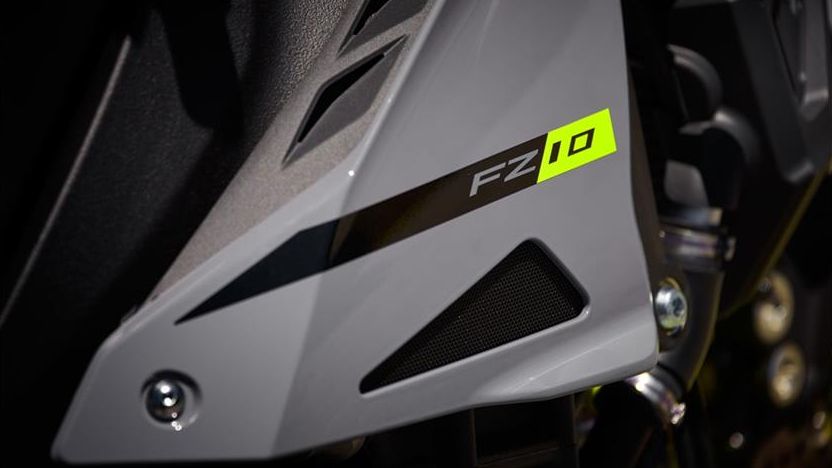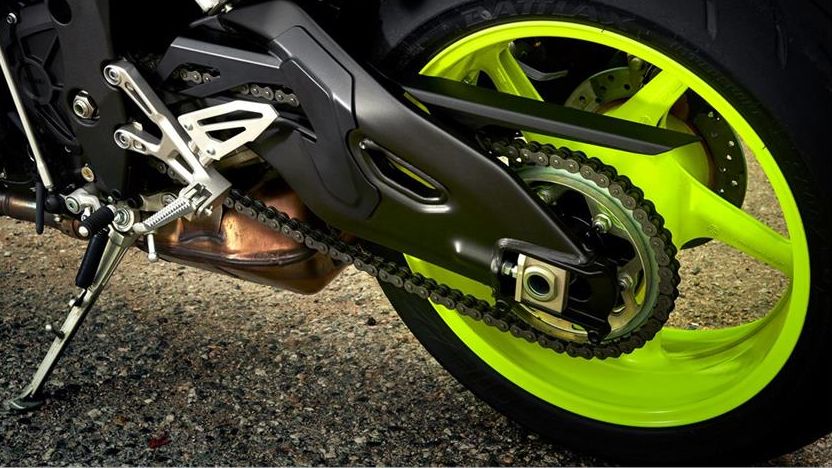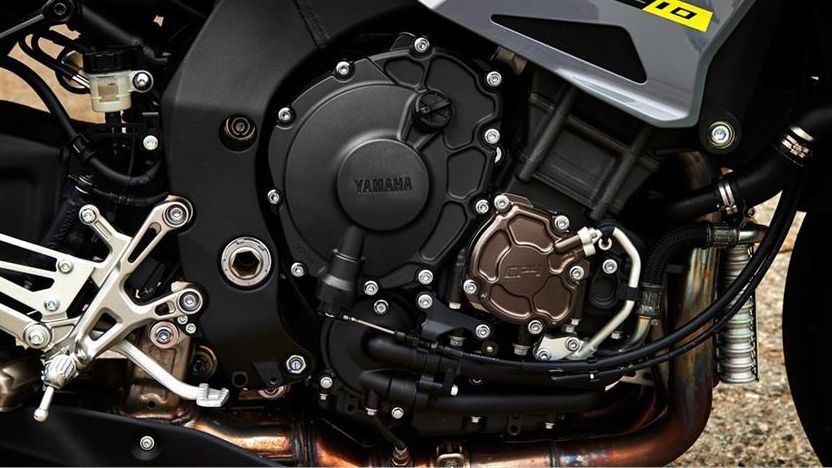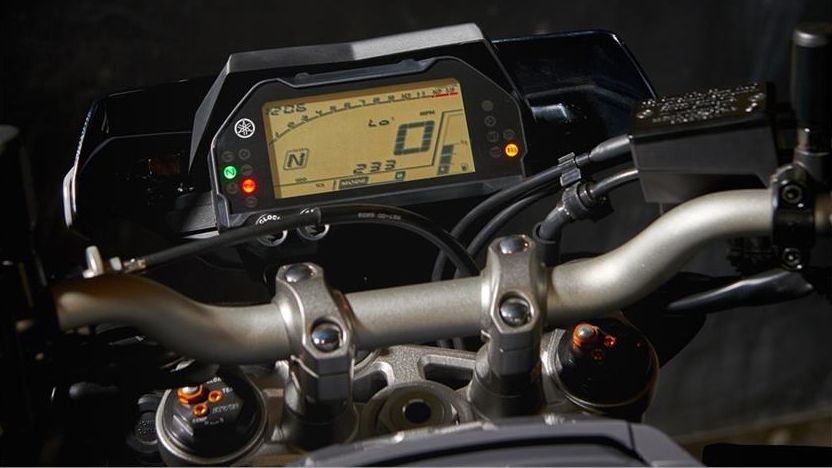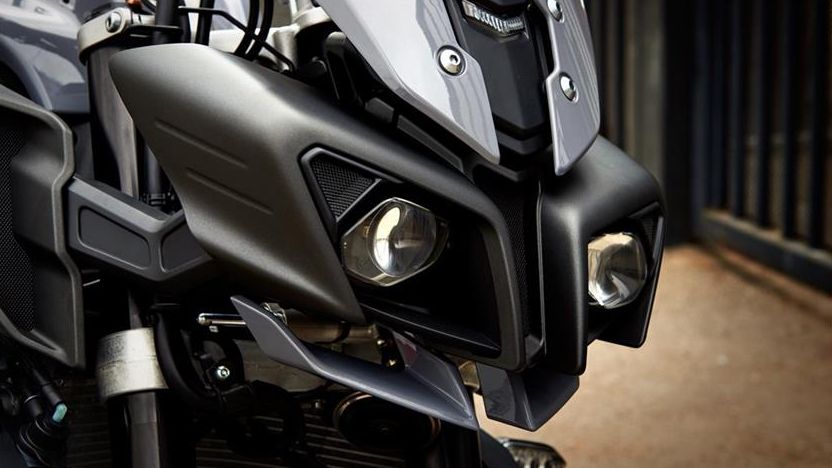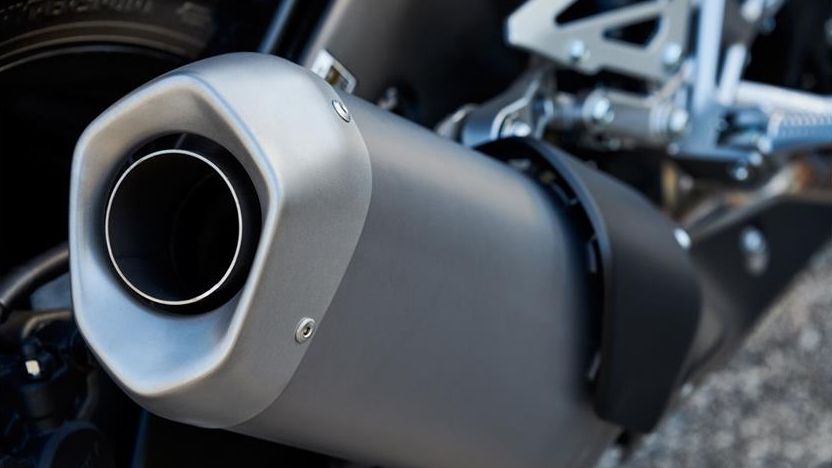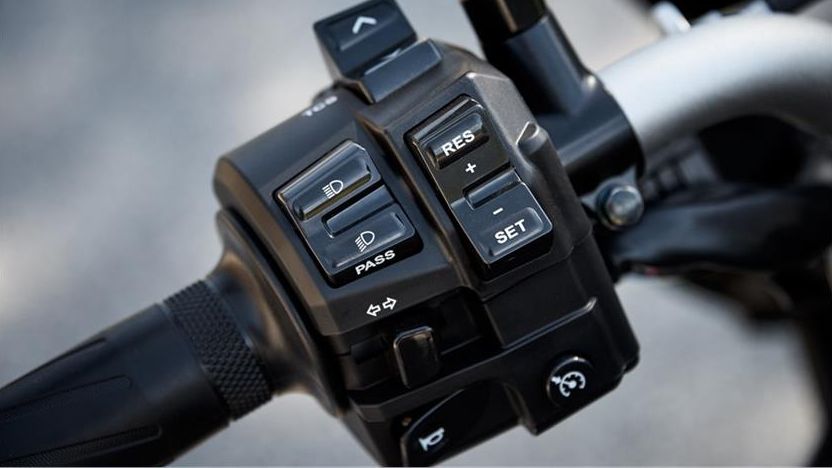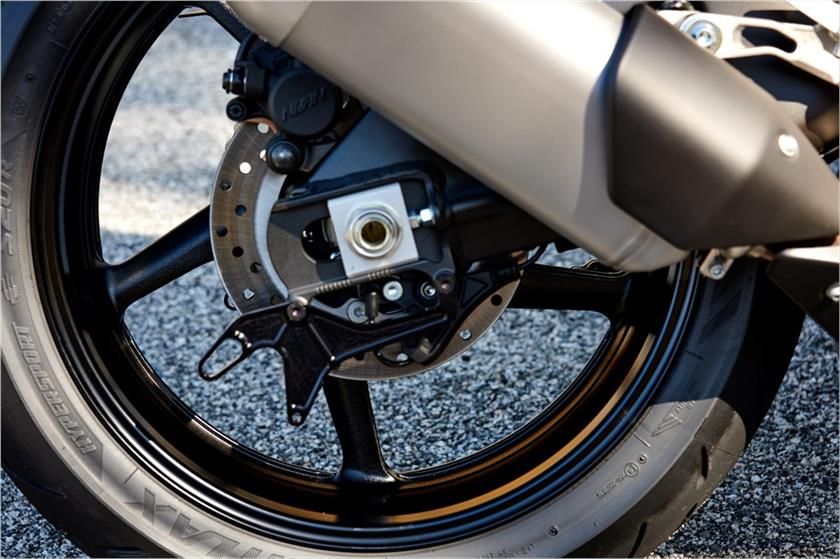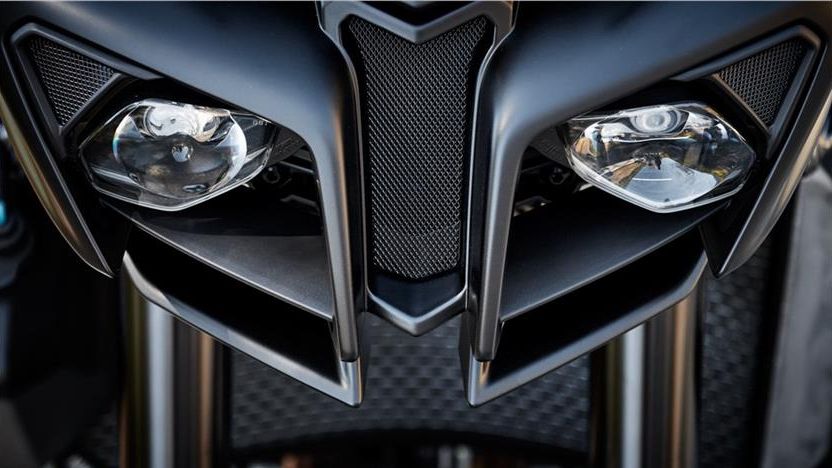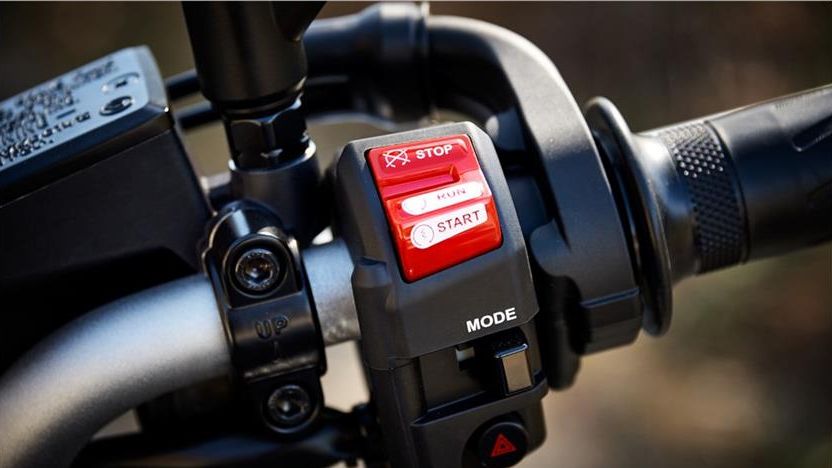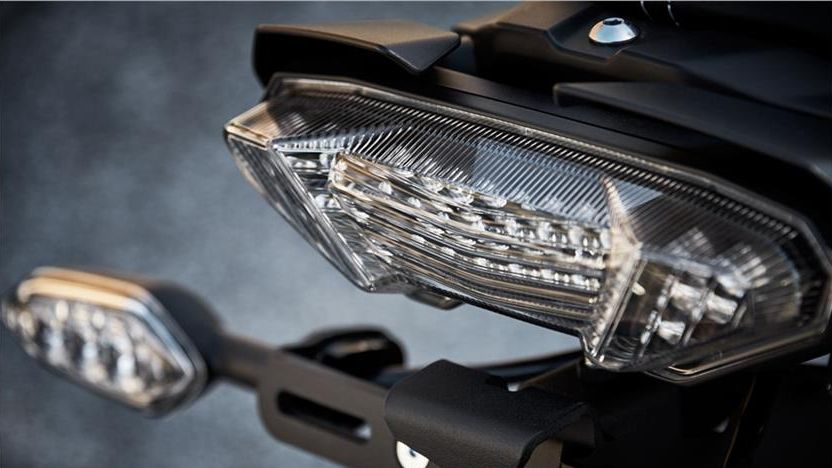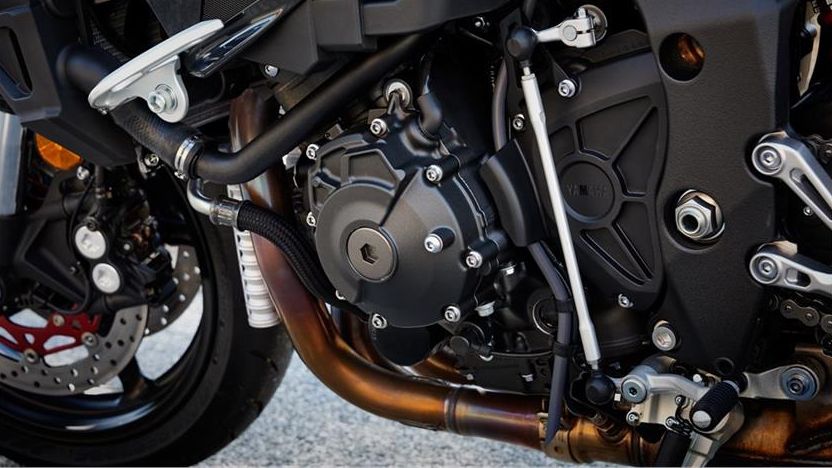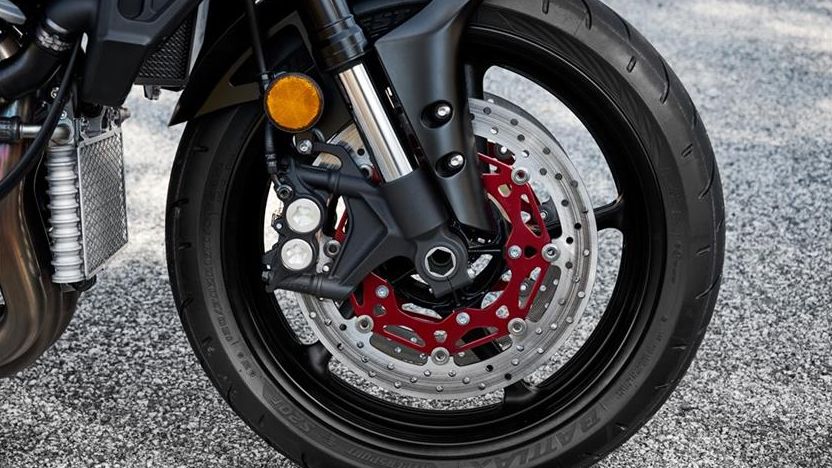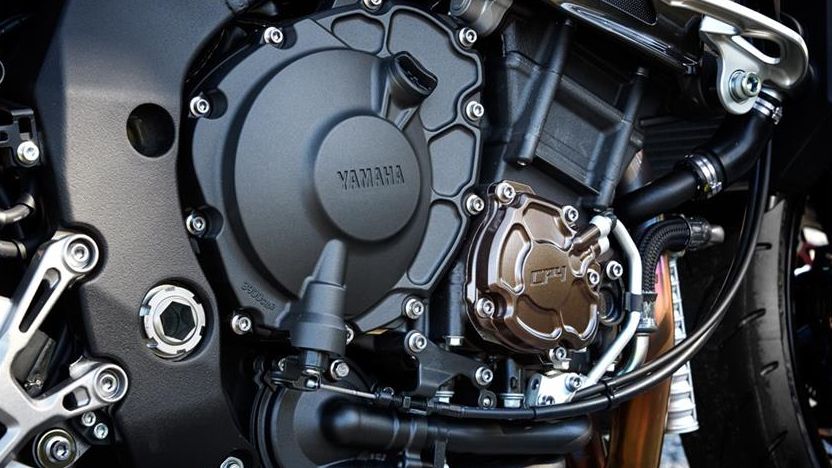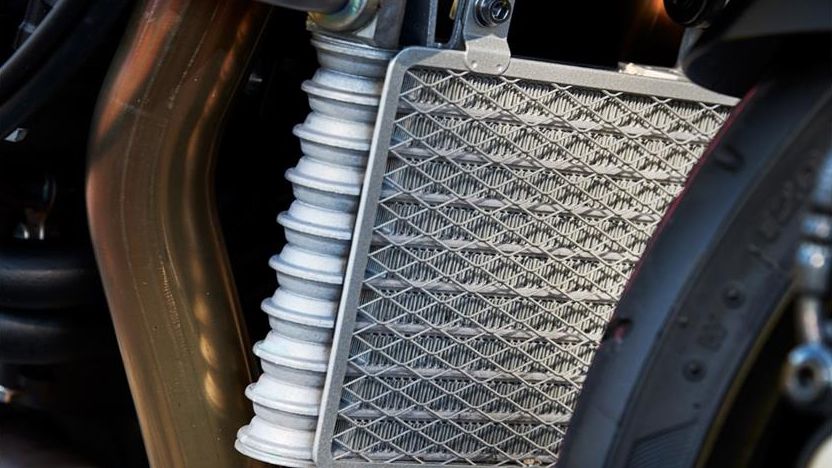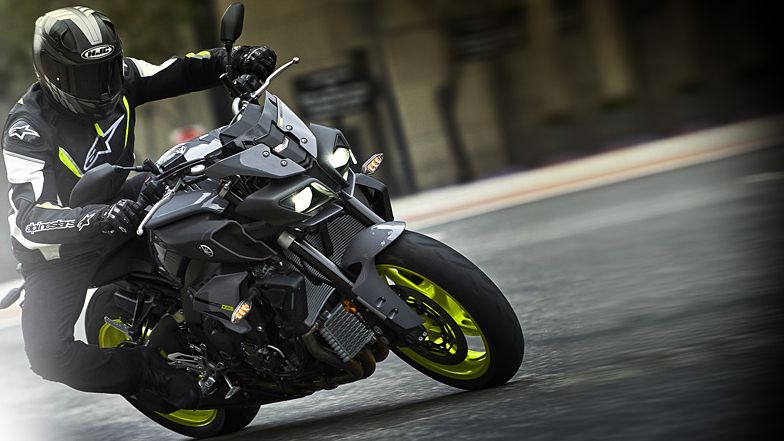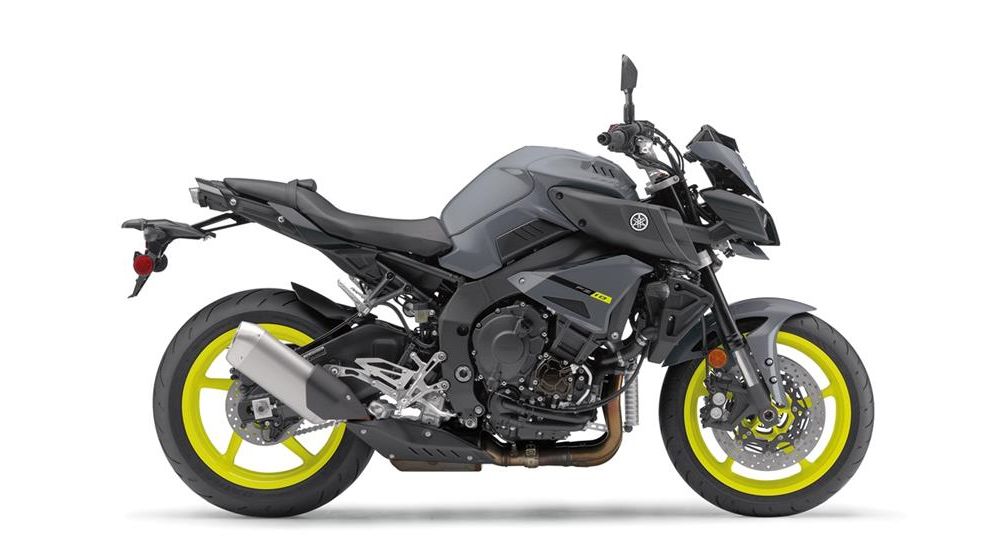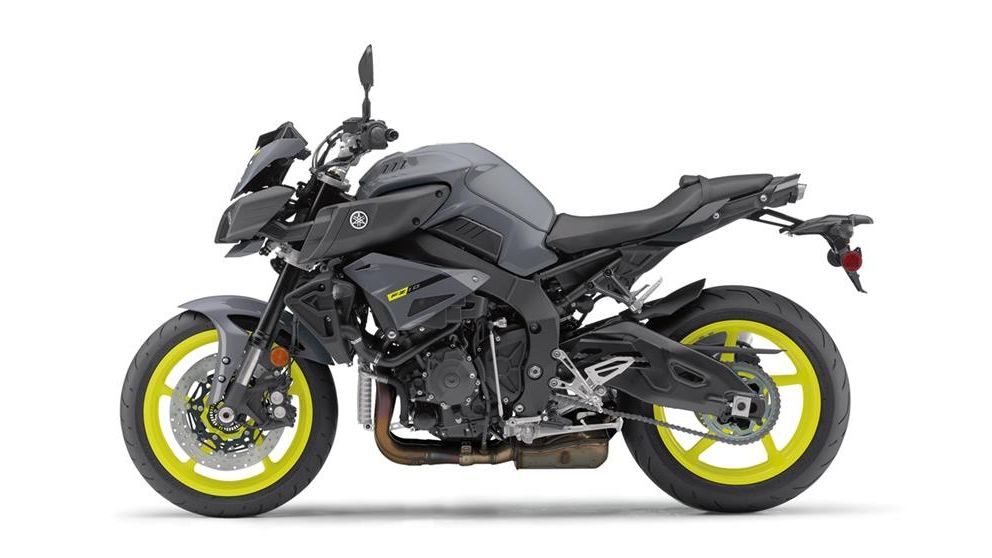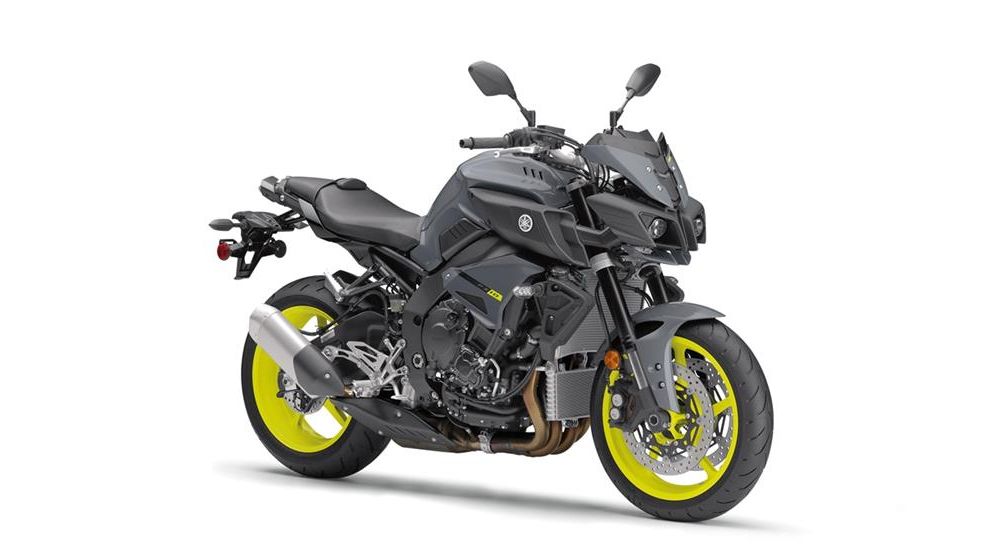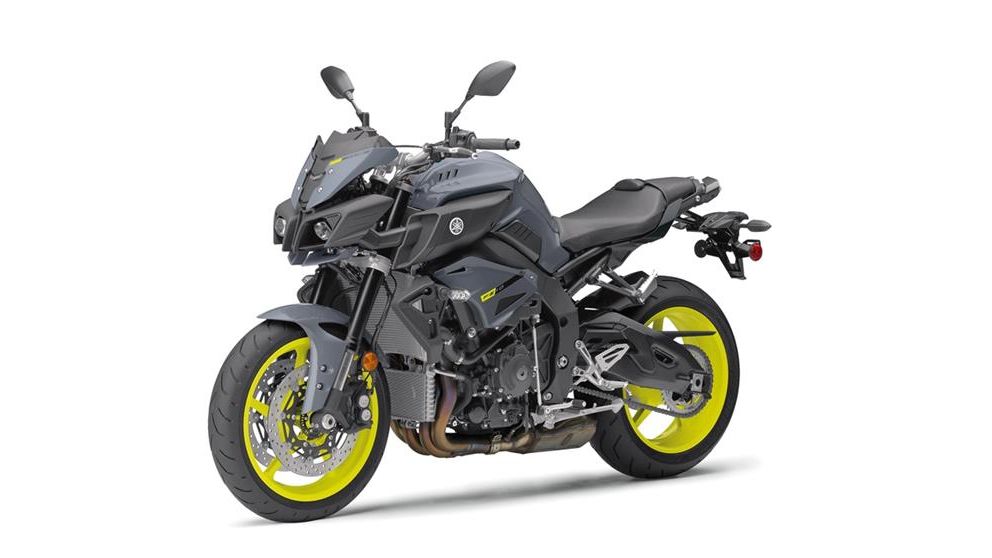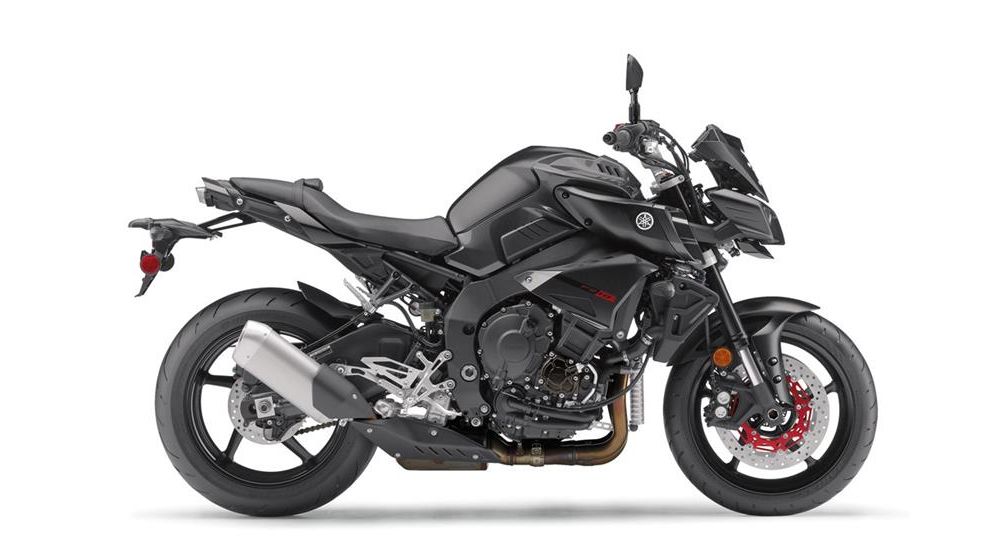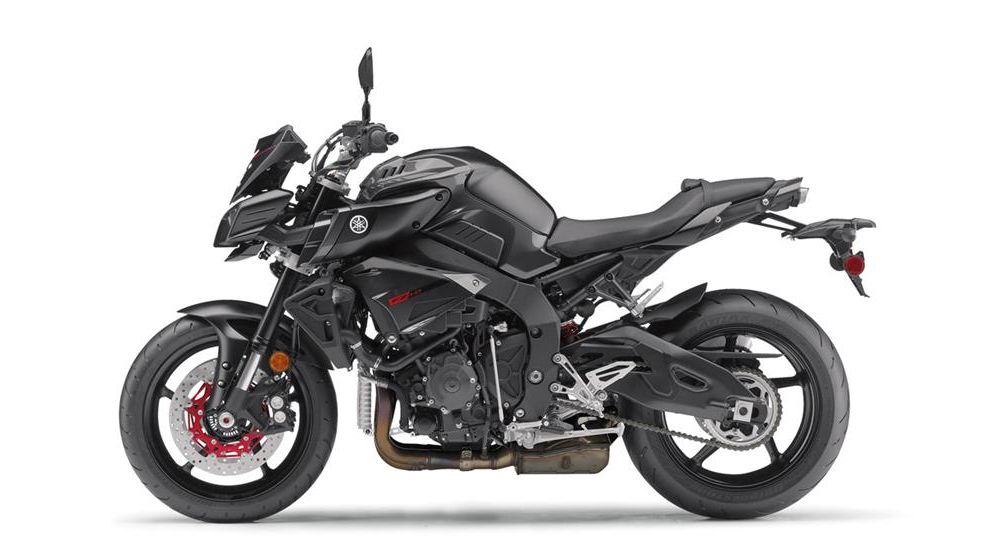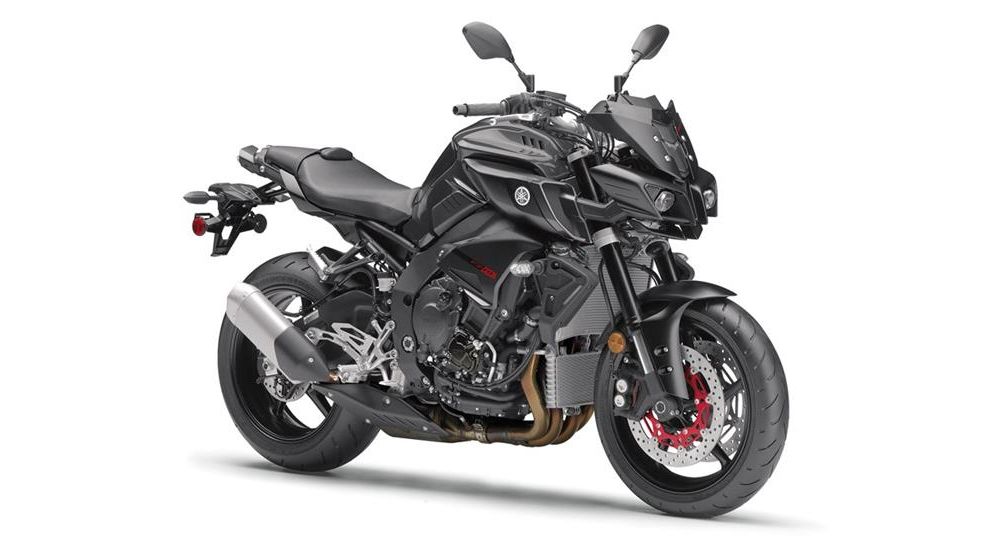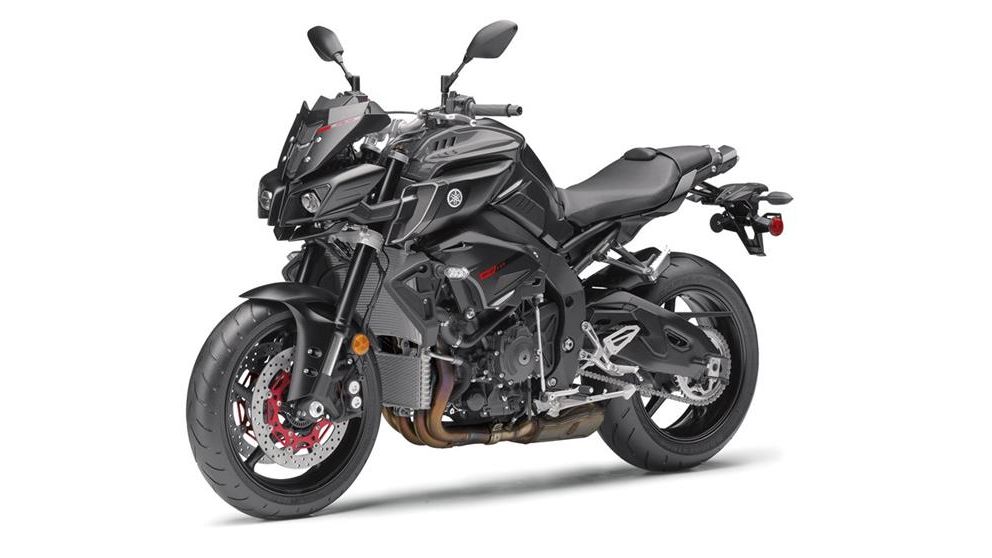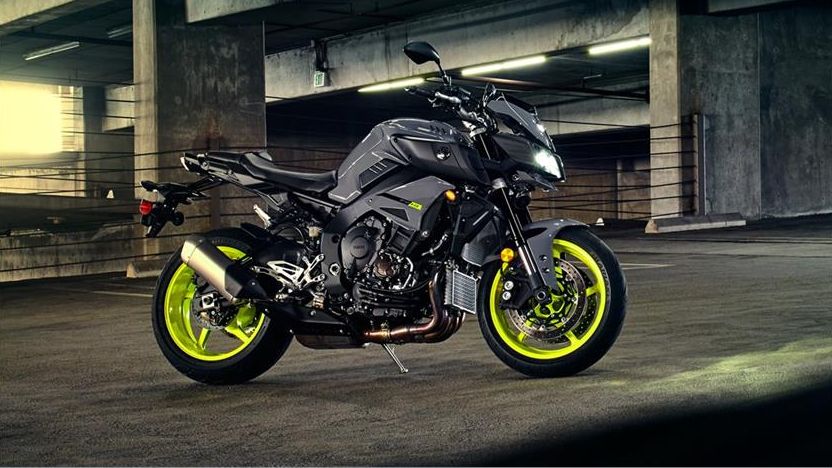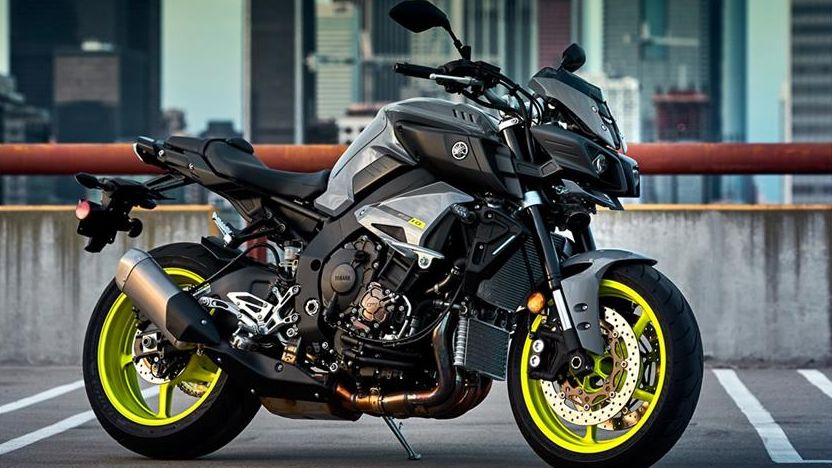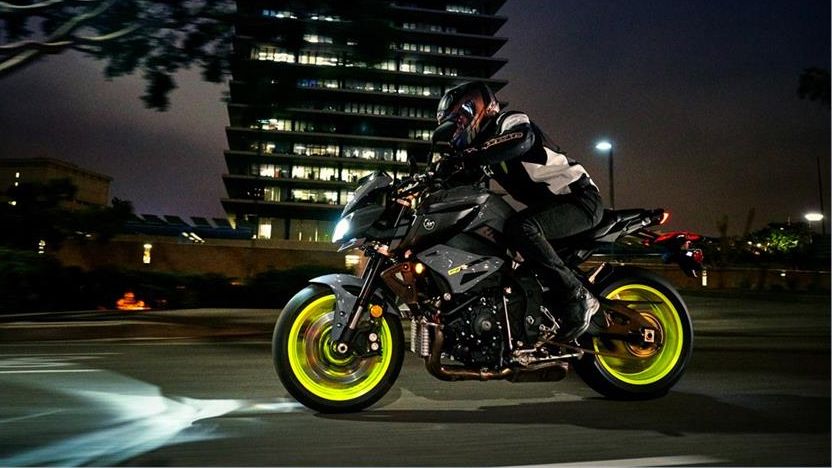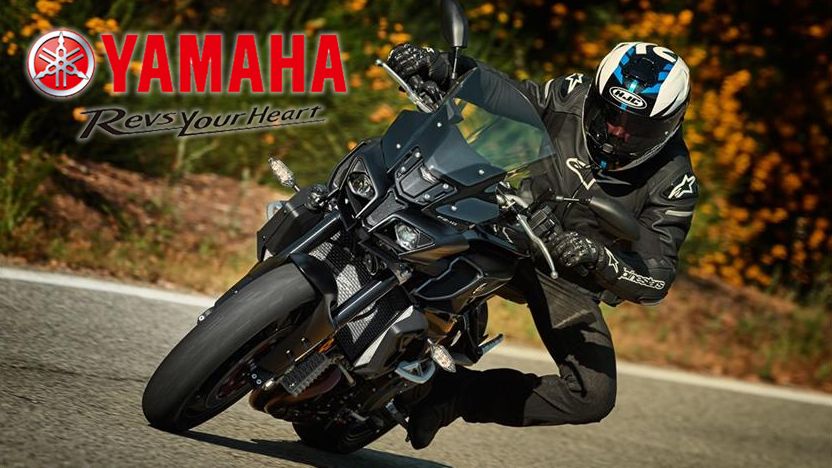After a year of feverish speculation and rumor-mongering, U.S. sportbike->ke631 fans finally get a crack at Yamaha->ke301's top-of-the-line, stripped superbike->ke1888; the FZ-10.
Fans in Canada and Europe will recognize this bike as their beloved MT-10 relabeled for the American market, and I take it as a sure sign that the market is finally starting to swing away from the full-plastic, racetrack look, and toward a more stripped down and street-friendly panache. Join me while I delve into the 2017 FZ-10 and find out what all the fuss has been about.
Continue reading for my look at the Yamaha FZ-10.
2017 Yamaha FZ-10
- Make: Array
- Model: 2017 Yamaha FZ-10
- Engine/Motor: inline-4
- [do not use] Vehicle Model: Array
Design
This bike really grabs the eye in a way that a full-fairing ride can't. It sports a sort of Transformers meets Predator look that may be just a bit too much for some folks. A little too edgy, little too Power Ranger. But like Old Abe said, people who like this sort of thing will find this to be just the sort of thing they like; and since beauty is very subjective, I trust the reader to form his/her/other's own opinion on that point.
I think we can all agree that it has a very aggressive look with a rather futuristic bent, and leave it at that. Much of this is due to the insect-looking split fairing that features separate high- and low-beams that look like eyes in a face, and the alien-queen flyscreen. Oh, but please don't take this to mean that I don't like it 'cause I actually do. It's edgy and new, with much in the way of implied technology and performance without going the wind-tunnel tested, race-replica route or swinging all the way to Mad-Max naked->ke5317.
The high-tech, LED lights and LCD instrument display reinforce the post-modern look quite a bit, and LED tail lights and turn signals are always welcome in my book for their eye-piercing brightness and inherent safety. Although the foot controls and seat position are still set up as a jockey mount, a bit of rise and pullback on the bars encourages a more relaxed, upright riding position than you get from a more race-centric model like the YZF->ke1937-R1, for instance.
Chassis
The R1 DNA persists all the way down into the bones of the beast with the all-aluminum, Deltabox frame that uses the engine as a stressed member to keep the weight down and clean up the looks around the cradle area. It comes tweaked specifically for the FZ-10 for what Yamaha figures is the perfect blend of strength and flex for street use, and the 24-degree rake and 4-inch trail coupled with the 55.1-inch wheelbase strikes a balance between maneuverability and stability at speed.
Suspension duties fall exclusively to KYB with a set of 43 mm, usd forks that come adjustable for preload, as well as compression and rebound damping via set screws on the fork cap. A piggyback, KYB, rear monoshock sports the same adjustments, and suspension at both ends provides 4.7-inches of wheel travel. Lightweight, 17-inch aluminum rims mount 120/70 front, and 190/55 rear, Bridgestone Hypersport S20 hoops that come formulated for maximum stickiness on the blacktop.
Radial-mount, four-pot, opposed-piston calipers pinch the dual, 320 mm brake discs up front for the bulk of the braking power, with a 220 mm disc in back. ABS comes as standard equipment, and while Yamaha touts it as “advanced,” the fact remains that it comes sans the six-axis, Inertial Measurement Unit (IMU) seen on the R1 range. This is but one of the compromises struck in order to keep the price low.
Drivetrain
Yamaha's R1-based, Crossplane Concept engine represents more compromise, but instead of price versus electronics, it's price versus weight. Certain internal components that would normally be made from lightweight magnesium or titanium instead come made from steel. Still plenty tough and cheaper to produce, but much heavier.
The four-bore, water-cooled, 998 cc engine runs a dual overhead cam with four-valves per cylinder, and the forged pistons ride within plated cylinder walls rather than a heavy sleeve insert. Electronic fuel injection feeds the beast, and the dramatically oversquare, 79 mm bore and 50.9 mm stroke mill runs with a blistering hot, 13-to-1 compression ratio.
Though the engine isn't quite as powerful as the track-ready version in the superbike line, it still carries plenty of punch for riding on public roads with 81.8 pounds of grunt at 9,000 RPM and 160.4 ponies at 11.5 K. Yamaha's proprietary ride-by-wire system, the Chip Controlled Throttle (YCC-T) enables the D-Mode function that allows the rider to tune power delivery for conditions and preference, as well as the cruise control and the Traction Control System (TCS) that comes as standard equipment.
A slipper clutch couples the specially designed transmission to engine power, and provides another layer of protection for the rear contact patch. What's special about the six-speed transmixxer you ask? It's the triangular arrangement of the stacked main-and counter-shafts in relationship to the crankshaft; a move that centralizes the weight of those components and ultimately improves handling.
versus0}
U.S. buyers can score a 2017 FZ-10 in Matte Raven Black or Armor Gray with neon green wheels for $12,999 with a one-year warranty.
Pricing
My first inclination was to grab the 1000 cc gixxer->ke2088, but I realized that I had to back off that for a true apples-to-apples comparison, so instead I grabbed the GSX-S1000F ABS from Suzuki->ke371 for my head-to-head bit. Much like the FZ-10, the GSX-S is the street-centric offspring of a proper race bike->ke2345, in this case the '05 through '08 GSX-R1000. Yamaha strips away a lot of body paneling for a fairly naked look, while Suzuki favors a more windtunnel-tested look that leaves a little more to the imagination.
I gotta say, both manufacturers swung for the fences -- almost. OK maybe that's not fair, and closer to the truth to say that “street-tuning” a racebike comes with the implication that it has in fact been detuned a bit, and so it is with both of these bikes. Ride-by-wire throttles, rider modes, traction control and ABS are standard across the board, but not necessarily up to the same standards as the race versions. The FZ mill surrenders only a single cube to the GSX-S, and manages to school Suzuki at the dyno with 160.4 ponies and 81.8 pounds versus the 145 horsepower and 78.2 pound-feet from the “S” mill.
Suzuki gets a significant win at checkout. At $10,999, the GSX-S1000F is a full two grand cheaper than the FZ-10 with its $12,999 MSRP. Not only is it more powerful with more mainstream looks, it's cheaper, so I expect the GSX-S to pose a serious threat to Yamaha for this slice of the market.
versus0}
“This is one wild-looking ride, and I can't quite decide if I really like it, or if I just got used to looking at it and tolerate it. Given the price, design and engine size, I definitely see this bike appealing to the younger, more testosterone-poisoned riders out there, so thank goodness it comes with traction control and ABS to help the kids keep it rubber-side down. I know many buyers just had to buy a new bike, and missed the FZ-10 by a matter of weeks, and in some cases, days. Let that be a lesson in patience boys, and next time have more faith, or at least learn to fake it. Wink nudge.”
She Said
My wife and fellow motorcycle writer, Allyn Hinton, says, “It's a smooth ride; no perceivable vibration in the pegs, which is a good thing. The seating position is similar to the FZ-07 so guys of average height will be slightly forward, but not aggressively so. It has a digital instrument cluster, which fits with the tech panache, but I think a full-color cluster would fit better with the full-on edgy look of the bike.”
Specifications
|
Engine: |
|
|
Engine Type: |
998cc, liquid-cooled DOHC inline 4-cylinder; 16 valves |
|
Bore x Stroke: |
79.0mm x 50.9mm |
|
Compression Ratio: |
12.0:1 |
|
Fuel Delivery: |
Fuel injection with YCC-T |
|
Ignition: |
TCI: Transistor Controlled Ignition |
|
Transmission: |
6-speed; wet multiplate assist-and-slipper clutch |
|
Final Drive: |
Chain |
|
Chassis: |
|
|
Suspension / Front: |
43mm KYB® inverted fork, fully adjustable; 4.7-in travel |
|
Suspension / Rear: |
KYB® single shock w/piggyback reservoir, fully adjustable; 4.7-in travel |
|
Brakes / Front: |
Dual hydraulic disc, 320mm; ABS |
|
Brakes / Rear: |
Hydraulic disc, 220mm; ABS |
|
Tires / Front: |
120/70ZR17 |
|
Tires / Rear: |
190/55ZR17 |
|
Dimensions: |
|
|
L x W x H: |
82.5 in x 31.5 in x 43.7 in |
|
Seat Height: |
32.5 in |
|
Wheelbase: |
55.1 in |
|
Rake (Caster Angle): |
24.0° |
|
Trail: |
4.0 in |
|
Ground Clearance: |
5.1 in |
|
Fuel Capacity: |
4.5 gal |
|
Fuel Economy: |
30 mpg |
|
Wet Weight: |
463 lb |
|
Other: |
|
|
Warranty: |
1 Year (Limited Factory Warranty) |
|
Colors: |
Matte Raven Black, Armor Gray |
|
MSRP: |
$12,999 |


